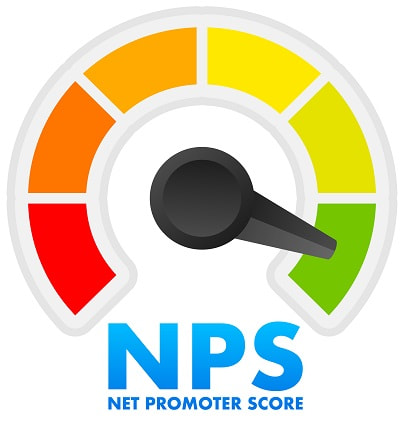Regularly gauging customer satisfaction levels is critical for any business looking to grow and keep its footing in the long run. Seen as a key customer satisfaction metric, the Net Promoter Score (NPS) can be leveraged to measure how likely consumers are to rave about a product or brand. Drag’n Survey breaks down everything there is to know about this indicator and how to act on it to crank up customer happiness.
>> Get the complete lowdown on the Net Promoter Score’s benefits, click here

NPS, a must-have tool for superior customer experience
The Net Promoter Score was originally devised in 2003 by consumer loyalty guru Fred Reichheld. Its main purpose is to measure customer satisfaction. This tool enables a company to evaluate the likelihood of its customers becoming advocates and recommending its products in their circle. The premise of NPS is that satisfied customers tend to spontaneously talk up a brand they enjoy doing business with among friends and family.
By assessing such likelihood, the company gains insight into how happy customers feel about the service provided. Having that data is invaluable for any organization, as it points to areas for improvement in hospitality and offerings. The end goal is to retain customers and morph them into fully-fledged brand ambassadors.
How NPS scoring works
The NPS assessment simply consists of asking customers how likely they are to recommend the company’s products and services to others. The question requires answering on a 0 to 10 scale. The score provides guidance as to the customer’s satisfaction level and the efforts required to keep them coming back.
With the Drag’n Survey online survey builder, fielding an NPS study can be done in minutes. The survey can also be distributed instantly to customers via social media or email.
NPS: Segmenting your customers
The NPS framework allows dividing customers into 3 main categories depending on their score.
Detractors
This bucket includes customers who gave a rating ranging from 0 to 6. This signals they feel very dissatisfied with their experience of the company’s offerings. This group should become a top priority, as they are likely to badmouth the brand and do damage to its reputation if their issues remain unaddressed. Specific action plans are required to mend relationships with detractors and mitigate backlash risks.

Passives
The passives are customers who provided a rating of 7 or 8 on the NPS study. They are much easier to retain since their score already reflects decent satisfaction levels. However, passives may still defect to a competitor if offered a better deal. To prevent this, getting to know those customers and their needs can reveal opportunities to delight them with tailored perks. Those special attentions are likely to crank up their satisfaction score.
Promoters
Promoters are the enthusiasts who speak positively of the company without prompting and drive growth through referrals. Retaining promoters should become any business’ #1 goal. They are responsible for an outsized share of sales and the most efficient marketing asset. Continued special treatment is key so they keep feeling valued and remain loyal advocates over time. Tactics may include giving them access to exclusive perks through a formal promoter program.
More about surveys:
A list of 5 alternative tools for Typeform users, click here
Building an online survey made easy with ChatGPT, click here
5 options to replace SurveyMonkey for your online survey needs, click here
14 essential questions to include in your customer satisfaction survey, click here
Explore the top 5 competitors to Google Forms for surveys and quizzes, click here
Read the article:
French – Comment utiliser le NPS ? click here
German – So steigern Sie mit NPS die Kundenbindung, click here
Portuguese – Como usar o NPS para aumentar a fidelidade do cliente, click here
